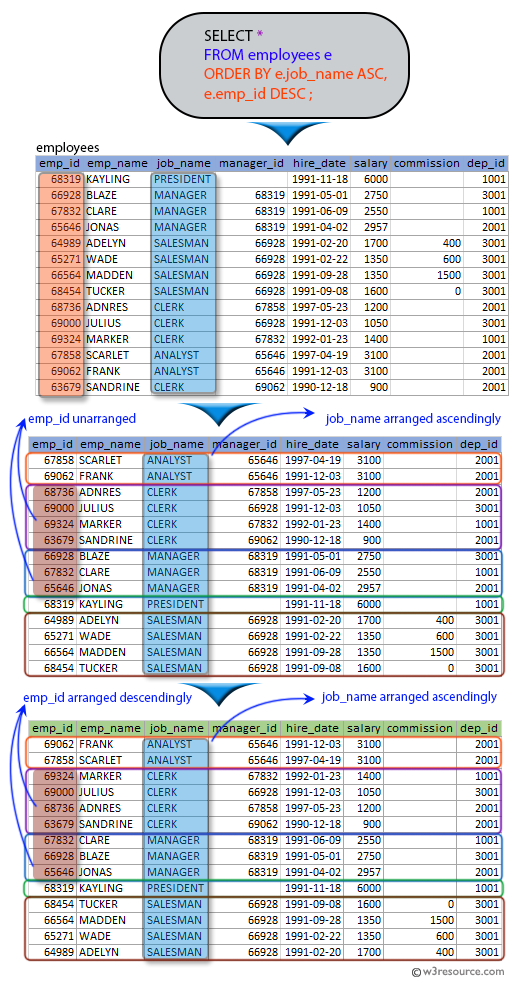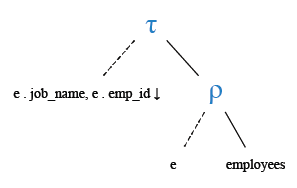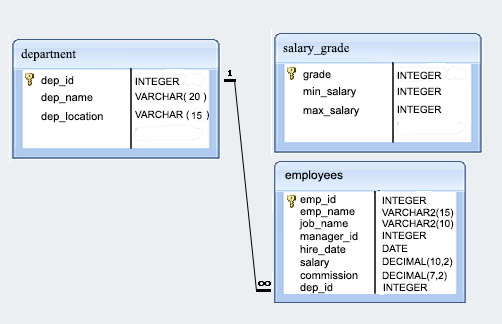SQL Exercise: Ascending by job name and descending by employee ID
[An editor is available at the bottom of the page to write and execute the scripts.]
75. From the following table, write a SQL query to list the employees in the ascending order by job title and in descending order by employee ID. Return complete information about the employees.
Sample table: employees
Pictorial Presentation:

Sample Solution:
SELECT *
FROM employees e
ORDER BY e.job_name ASC,
e.emp_id DESC ;
Sample Output:
emp_id | emp_name | job_name | manager_id | hire_date | salary | commission | dep_id --------+----------+-----------+------------+------------+---------+------------+-------- 69062 | FRANK | ANALYST | 65646 | 1991-12-03 | 3100.00 | | 2001 67858 | SCARLET | ANALYST | 65646 | 1997-04-19 | 3100.00 | | 2001 69324 | MARKER | CLERK | 67832 | 1992-01-23 | 1400.00 | | 1001 69000 | JULIUS | CLERK | 66928 | 1991-12-03 | 1050.00 | | 3001 68736 | ADNRES | CLERK | 67858 | 1997-05-23 | 1200.00 | | 2001 63679 | SANDRINE | CLERK | 69062 | 1990-12-18 | 900.00 | | 2001 67832 | CLARE | MANAGER | 68319 | 1991-06-09 | 2550.00 | | 1001 66928 | BLAZE | MANAGER | 68319 | 1991-05-01 | 2750.00 | | 3001 65646 | JONAS | MANAGER | 68319 | 1991-04-02 | 2957.00 | | 2001 68319 | KAYLING | PRESIDENT | | 1991-11-18 | 6000.00 | | 1001 68454 | TUCKER | SALESMAN | 66928 | 1991-09-08 | 1600.00 | 0.00 | 3001 66564 | MADDEN | SALESMAN | 66928 | 1991-09-28 | 1350.00 | 1500.00 | 3001 65271 | WADE | SALESMAN | 66928 | 1991-02-22 | 1350.00 | 600.00 | 3001 64989 | ADELYN | SALESMAN | 66928 | 1991-02-20 | 1700.00 | 400.00 | 3001 (14 rows)
Explanation:
The provided query in SQL that selects all columns from the 'employees' table and order the results first in ascending order on "job_name" column then for the group of same job_name the records will be sorted by the "emp_id" column in descending order.
It can be said that the records with the same "job_name" value makes a groups together, and the groups appears in alphabetical order and within each group of records with the same "job_name" value the the "emp_id" column will come from highest to lowest value.
Relational Algebra Expression:

Relational Algebra Tree:

Go to:
PREV : Sort the employees in ascending order on the salary.
NEXT : Sort unique jobs by department in descending order.
Practice Online
Sample Database: employee

Have another way to solve this solution? Contribute your code (and comments) through Disqus.
What is the difficulty level of this exercise?
Test your Programming skills with w3resource's quiz.
